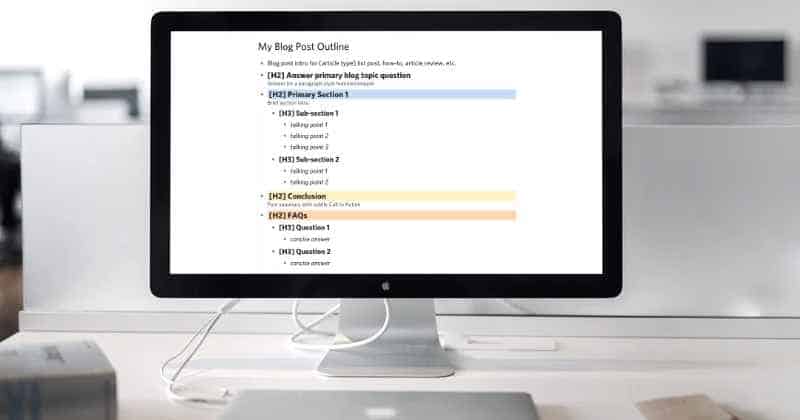Blogging for dummies might sound complex, but from my experience in digital marketing, blogging, and technology, I know it’s accessible to all. No need to be tech-savvy or a professional writer; anyone can start a blog with the right guidance.
Sure, there are challenges. Picking the right tools and writing content that people enjoy reading—I’ve faced these issues too. But they’re not roadblocks; they’re just bumps in the road. With the right help, you can get past them, just like I did.
So why blog? Because it’s an opportunity to connect, grow, and possibly discover a new income stream. Whether you’re a blogger, marketer, or entrepreneur, the practical advice here, crafted from my own successful experiences, is tailored for you. Are you ready to take the first step?
Understanding the Basics of Blogging
A blog is a powerful tool that allows you to share your thoughts and expertise with the world. Learn about different types of blogs and why starting one can benefit you in multiple ways. Whether you’re a beginner or looking to improve, these fundamental principles will guide you to success.
What is a blog?
A blog, the shortened term for “weblog”, functions as an online journal or informational website—information provided on a blog displayed in reverse chronological order, with the most recent post appearing first.
It’s an effective platform to showcase skills and knowledge while establishing your personal brand. Regular updates are crucial in blogging, allowing you to provide frequent insights into specific topics of interest.
Blogs bridge the gap between creators and their audience, fostering dialogue through comment sections and social media shares.
Different types of blogs

Many blog types cater to many interests. Here are a few:
- Personal Blogs: Much like an open diary, personal blogs present an avenue for expressing thoughts, sharing experiences, and documenting life’s journey. From narrating memorable family cookouts to introspective ponderings, these blogs exude authenticity and individuality.
- Niche Blogs: A goldmine for enthusiasts, niche blogs delve deep into a specific topic or industry. They provide detailed insights, handy tips, and crucial knowledge about their chosen field.
- Affiliate/Review Blogs: Have you ever felt indecisive about purchasing a new device or subscribing to a service? Affiliate or review blogs come to your rescue by providing comprehensive reviews on various products or services in a particular market.
- Business Blogs: Primarily used by companies and online businesses, these blogs are a strategic tool for promoting products or services, establishing brand authority, and building customer relationships.
- Professional Blogs: These are owned by experts in their fields. They use blogging as a platform to share expert advice and tips while monetizing their knowledge through ads, sponsored content, and consultancy services.
- Guest Posting Blogs: These blogs welcome contributions from multiple writers who offer unique perspectives on various topics. It is a great way to interact with different bloggers and widen one’s network in the blogging community.
Benefits and Reasons to Start Blogging

There are many benefits to starting a blog. It can help you grow your business, establish yourself as an expert, and even make money online. Read on to learn more!
- Start an online business
- Grow an existing business
- Create a personal brand
- Launch a freelance writing career
- Promote your books
- Spread an important message
- Document your life
- Establishing yourself as an expert in your field
- Building a personal brand
- Networking and collaboration opportunities
- Enhancing writing and communication skills
Starting a blog can open the gateway to numerous personal and professional growth opportunities. Here’s how:
- Starting an online business: Blogging sets the stage for launching a digital company. Whether you’re selling products or offering services, your blog is an accessible platform for clients worldwide.
- Growing an existing business: For entrepreneurs, blogging can be a marketing tool that provides exposure and enhances audience interaction with your brand.
- Creating a personal brand: Crafting a strong personal brand is key to establishing yourself in any industry. Blogs provide room for displaying your expertise, ultimately earning trust and credibility from your readership.
- Launching a freelance writing career: Aspiring writers can demonstrate their skills through blog posts, attracting potential employers or clients searching for quality content creators.
- Promoting your books: If you’re an author, blogging about topics related to your book will garner more attention while providing valuable information to your readers.
- Spreading an important message: Blogs allow individuals to share their thoughts and perspectives on critical issues with the world.
- Documenting life: Blogs are great digital diaries for those who wish to document their life experiences – all these data points create rich narratives that might draw in audiences over time.
- Establishing yourself as an expert in your field: Regularly posting well-researched, high-quality articles on specific topics helps reinforce your authority in the respective area of expertise.
- Building a personal brand: Cultivating a strong personal identity increases visibility amongst peers and potential clients alike – thus leading to new opportunities down the line!
- Networking & collaboration opportunities: Engaging actively within blogging communities can lead to collaborations, partnerships, or even friendships with fellow bloggers or industry experts.
- Enhancing writing and communication skills: Consistent blogging enables continuous improvement of writing standards while fostering effective communication with diverse audiences online.
Easy Steps to Start Blogging Today

To start blogging today, the first step is to pick a niche and a name for your blog. Choosing a niche helps you target your audience effectively while giving your blog a unique identity.
Once you’ve decided on the niche, find and purchase a domain name that aligns with it. Next, choose the right blogging platform by comparing different options and considering factors like ease of use and customization options.
After selecting your platform, sign up for web hosting to get your blog online. With these steps completed, you’re ready to move on to designing your blog’s theme and writing your first post!
Pick a niche and a name for your blog
Choosing the right niche for your blog is like setting a foundation stone. It gives your content direction and helps attract an audience with specific interests, making your blog successful in its category.
Start by identifying what you’re passionate about, and it could be anything from fitness and health to tech advancements or even cooking! Analyze potential niches by researching existing blogs, social media forums, and keyword tools.
Once you’ve decided on the niche that suits you best comes the part of naming your blog – which can make all the difference in attracting readers online! A good name reflects who you are and what topics or themes readers can expect from your posts.
Keep it catchy yet informative and easy to pronounce and remember while relevant to your chosen theme.
Remember that names often form first impressions, so take time brainstorming ideas until you find something unique that resonates with both- You as a blogger & Your targeted audience alike!
Why do you need a niche?

Having a niche for your blog is a must if you want to establish yourself as an expert and stand out from other bloggers. A niche allows you to target a specific audience, making attracting loyal readers interested in your content easier.
Focusing on a particular area allows you to narrow down your content ideas and stay more focused on your writing. This helps build credibility and creates a unique brand identity for your blog, making it easier for people to recognize and remember your work.
So, whether you’re blogging about weight loss tips or offering insights on starting an online business, having a well-defined niche will set you up for success in the blogging world.
How to pick your niche and name your blog
One of the first steps to start blogging is choosing a niche, or topic area, for your blog. It’s important to focus on a specific niche rather than covering a wide range of topics.
This will help you stand out and become an expert in that area. Think about your passions, interests, and expertise when picking your niche. Consider what topics are popular and have a large audience but also align with your own interests.
Once you’ve chosen your niche, it’s time to pick a catchy and descriptive name for your blog. Your blog’s name should reflect the topic of your blog and be memorable to potential readers.
Get your blog online
You need to take a few key steps to get your blog online. First, find and purchase a domain name that reflects your blog’s niche and brand. Consider factors such as relevance, memorability, and availability.
Next, choose the right blogging platform for your needs by comparing options like WordPress or Blogger. Sign up for web hosting to ensure your blog has a reliable home on the internet.
Once you have set up your blog’s foundation, it’s time to customize its design. Decide whether to use a free or paid theme and add it to your WordPress site. Make sure to customize the layout and appearance of your blog to integrate branding elements and enhance usability.
Remember that getting your blog online is just the beginning. There is much more to learn about writing compelling content, promoting your blog, growing an audience, monetizing your efforts, and staying ahead in the industry.
Find and purchase a domain name
When starting a blog, one of the important steps is finding and purchasing a domain name. A domain name is the web address that people will use to access your blog. It should be unique, catchy, and relevant to your niche or topic.
Choosing a good domain name can help attract readers and make your blog more memorable. You can search for domain names on various websites offering domain registration services.
Once you find the perfect domain name, you can purchase it for an affordable price, usually with options for different payment plans and additional services like privacy protection.
Comparing Factors to consider and Choosing your blogging platform
Selecting the best blogging platform for your needs involves careful comparison and consideration of various factors. Here is a guide to assist you in making an informed decision.
| Platform | Ratings | Pricing | Features |
|---|---|---|---|
| WordPress.org | 4.9/5 | Free to $45 per month | Customizable themes, Full control over your blog, SEO tools, Thousands of plugins |
| Wix | 4.3/5 | Free to $39 per month | Drag-and-drop editor, Lots of design flexibility, SEO tools, Mobile-friendly designs |
| Blogger | 3.8/5 | Free | Easy to use, Google’s reliability and robustness, Integration with other Google apps |
| Squarespace | 4.6/5 | $12 to $40 per month | Beautifully designed templates, Good for e-commerce, SEO tools, Mobile-friendly designs |
| Ghost | 4.1/5 | $9 to $199 per month | Speedy and sleek interface, Good for professional publishing, SEO tools, Membership/subscription features |
| Medium | 3.9/5 | Free to $5 per month | Focus on writing, Built-in audience, Good for thought leadership |
In choosing the best platform for your blog or small business, you should consider factors like your budget, required features, ease of use, and long-term goals. It’s also crucial to check the reviews and ratings for better insights. For instance, WordPress.org is rated the highest and is a versatile choice for various blogging needs.
However, if you’re looking for a free platform, Blogger is a reliable option. Always strive to choose a platform that aligns with your blogging goals and needs.
Signing up for web hosting
One of the essential steps to starting your blog is signing up for web hosting. This involves registering a domain name and creating a blog hosting account. Choosing a reliable web hosting provider is crucial for ensuring that your blog is accessible to readers at all times.
Additionally, it’s important to consider factors such as pricing plans, features offered, customer support, and uptime guarantee when selecting a web host. If you’re new to blogging or need assistance setting up web hosting, don’t worry! Thare are plenty of online resources can provide step-by-step guidance and personal assistance to help you through this process.
Change your blog’s design (theme)
Changing your blog’s design (theme) is crucial in starting a successful blog. You want your blog to stand out and make a strong first impression on your readers. You can create an attractive and professional-looking website that reflects your unique style and brand by choosing a visually appealing theme.
Adding videos and pictures to enhance the design will also help engage your audience and keep them intrigued. Don’t worry if you’re not tech-savvy – our guide provides easy steps to change your blog’s design (theme), and we even offer free personal assistance to help you along the way.
Take this opportunity to showcase your creativity and ensure your blog is visually stunning from day one.
Free vs Paid themes
As a blogger or entrepreneur venturing into the blogging space, it is crucial to understand the differences between free and paid themes when setting up your blog. Let’s explore these differences in the table below:
| Free Themes | Paid Themes |
|---|---|
| Free themes are cost-effective and can be used without financial commitments. | Paid themes require a one-time payment or a subscription fee. |
| They come with basic designs and minimal customization options. | Paid themes offer advanced design features and increased customization options. |
| WordPress developers have approved free themes, ensuring their quality and compatibility with the platform. | Paid themes also carry the approval of WordPress developers, but they come with exclusive features not found in free themes. |
| Support for free themes may be limited or non-existent. | Paid themes often come with dedicated support, helping you troubleshoot any issues that might arise. |
| Free themes are a good choice if you’re starting out and testing the blogging waters. | Paid themes are an investment, and a good choice if you’re committed to blogging as a business or serious endeavor. |
Choosing between a free and a paid theme depends on your budget, design needs, and long-term blogging goals.
Installing WordPress Themes

WordPress themes are essential for any blogger or entrepreneur aiming to customize their website’s look. Accessing a wide range of beautifully designed themes is easy with WordPress, allowing for quick installations that professionally transform your blog’s appearance.
Installing a theme is straightforward: simply access the “/wp-content/themes/” directory in your website’s files. Here, you have many options to find the ideal theme that resonates with your brand or style.
Easy Theme Installation
Adding themes to WordPress is an effective way to distinguish your site, suitable for beginners and those looking to refresh their site’s design.
The platform supports several beginner-friendly methods for theme installation. Users of WordPress.com benefit from drag-and-drop layouts, enabling site design customization without coding. This feature offers total design control minus the technical hassle.
For those on self-hosted WordPress.org, theme installation requires downloading the theme’s .zip file and uploading it through the admin area. After uploading, simply activate the theme and customize it to fit your needs.
- Access themes: Navigate to “/wp-content/themes/” in your site files.
- Choose and install: Pick the theme that best suits your style.
- Customize: Adjust the theme settings to match your brand.
These steps ensure a smooth process to enhance your site’s readability and overall aesthetic, catering to human readers with visually appealing and SEO-optimized content.
Customizing layout and appearance (Integrating branding elements, Enhancing usability and navigation)
Customizing the layout and appearance of your blog is a crucial step in creating a visually appealing and user-friendly website. By integrating branding elements, such as your logo, color scheme, and fonts, you can establish a cohesive and recognizable visual identity for your blog.
This helps to build brand awareness and make a lasting impression on your readers. Additionally, enhancing usability and navigation is essential for creating a positive user experience.
Clear navigation menus, easy-to-find search bars, and intuitive page layouts make it easier for visitors to find the information they are looking for on your blog. So, when choosing a blogging platform, look for one that offers customizable themes and templates to create the perfect look for your blog.
Adding default pages (about, contact, privacy)
Adding default pages such as “about,” “contact,” and “privacy” is a crucial step in starting a blog. These pages provide essential information to your visitors, helping to establish credibility and professionalism.
The “about” page allows you to introduce yourself, share your expertise or background, and connect with your audience on a personal level. On the other hand, the “contact” page enables visitors to contact you for collaboration opportunities, questions, or feedback.
Lastly, the “privacy” page outlines how your blog collects, uses, and protects visitors’ personal information — demonstrating transparency and compliance with privacy laws. By including these default pages on your blog platform, you can create trustworthiness while effectively engaging with your readers.
Write your first blog post
Writing your first blog post can be an exciting and nerve-wracking experience. But don’t worry, I’m here to guide you through it. Start by doing some keyword research to understand what your target audience is searching for.
This will help you create content that resonates with them. Next, create an outline to organize your thoughts and ensure a logical flow in your post. Once the outline is ready, start writing compelling content that provides value to your readers.
Remember to enhance your post with relevant images, videos, and lists to make it more engaging. Don’t forget about SEO – optimize your content by using keywords effectively and crafting an attention-grabbing title and a strong meta description.
Keyword/topic research
Keyword/topic research is an essential step for beginners who are starting a blog. It involves identifying the most relevant and popular keywords related to your niche or topic. By conducting keyword research, you can gain valuable insights into what people are searching for online and tailor your content accordingly.
This helps you increase your blog’s visibility and attract more organic traffic.
To conduct keyword/topic research, various tools can assist you in finding relevant keywords and their search volumes. Keyword planners and research tools allow you to explore different keyword options, analyze their competition levels, and determine which ones have high search volumes.
By targeting keywords with high search volumes and low competition, you can optimize your blog’s content to rank higher in search engine results pages (SERPs) and attract more readers.
It is important to update your keyword research as trends change over time regularly. What may be popular today might not be relevant tomorrow. By staying up-to-date with the latest keyword trends in your niche, you can ensure that your blog remains competitive and continues to attract a steady flow of organic traffic from search engines.
Create an outline

Creating an outline is a crucial step in writing a blog post. It helps you stay organized and ensures that your content flows smoothly. Start by brainstorming ideas and organizing them into main points or sections.
Then, break down each point into sub-points or key details you want to cover. This will serve as a roadmap for your blog post and simplify the writing process. Remember to include an introduction, body paragraphs, and a conclusion in your outline.
Creating an outline saves time and ensures that your blog post is well-structured and engaging for your readers.
Write compelling content
Regarding blogging, one of the most important aspects is writing compelling content. Your blog posts must captivate and engage your readers, keeping them returning for more.
To do this, conduct thorough keyword or topic research to understand what your audience is searching for. Then, create an outline that organizes your ideas and helps you stay focused.
When writing the actual post, use clear and concise language that is easy for your readers to understand. Remember to enhance your content with images, videos, and lists to make it more visually appealing and easier to read.
Additionally, optimize your post for SEO by incorporating relevant keywords naturally throughout the content. Craft an engaging title that grabs attention and write a meta description that entices readers to click on your link when it appears in search engine results.
Enhance posts with images, videos, and lists
Incorporating images, videos, and lists into your blog posts can greatly enhance the overall reader experience. Adding visual elements helps to break up the text and make your content more visually interesting.
Images and videos can help illustrate key points or provide examples, making it easier for readers to understand and engage with your message. Lists are also valuable as they organize information clearly and concisely, making it easier for readers to digest.
Incorporating these visual elements into your blog posts can create a more engaging and visually appealing experience for your audience.
Optimize content for SEO (on-page SEO)
Optimizing your content for SEO, or on-page SEO, is a crucial step in getting your blog noticed by search engines. By implementing the right strategies, you can improve your chances of ranking higher in search engine results pages (SERPs) and attracting more organic traffic to your blog.
One important aspect of on-page SEO is conducting thorough keyword research. This involves identifying the terms and phrases people search for related to your topic. By strategically incorporating these keywords into your content, such as in headings, title tags, meta descriptions, and URLs, you increase the likelihood of appearing in search results when users enter those specific queries.
But it’s not just about stuffing keywords into your content; quality matters too. Creating valuable and engaging content that addresses user needs will satisfy readers and help build authority with search engines.
It’s essential to consider search intent – what users are looking for when conducting a specific search – and align your content to meet those needs.
Crafting an engaging title and Writing a meta description
Crafting an engaging title and compelling meta description are crucial steps in optimizing your blog post and grabbing readers’ attention. A well-crafted title should be catchy, concise, and descriptive, giving potential readers a clear idea of your post.
You can make your title more engaging by using active language and making it actionable. As for the meta description, keep it under 155 characters to ensure it’s fully displayed on search engine results pages.
Use this opportunity to entice readers with a summary of what they can expect from your blog post. Including a strong call-to-action can even encourage them to click through and read the entire article.
Start to promote your blog and grow your audience
Promoting your blog is essential for attracting readers and growing your audience. You can use several effective strategies to get the word out about your blog. One way is by letting your family and friends know about it and asking them to share it with their networks.
Additionally, social media platforms like Facebook, Twitter, and Instagram can help you reach a wider audience. Another technique is to guest blog on other people’s blogs, allowing you to tap into their existing readership and gain exposure for your work.
Finally, joining relevant Facebook groups or other social media communities can connect you with like-minded individuals interested in what you have to say. Remember that building an audience takes time and effort, but with consistency and perseverance, you can steadily increase your reach and attract more readers to your blog.
Letting family and friends know about your blog
Once you’ve created your blog and written your first few posts, it’s time to let your family and friends know about it. Sharing your blog with them is a great way to build an audience and get feedback on your content.
You can send them a personalized email or message with the link to your blog, inviting them to check it out. You can also share it on social media platforms like Facebook, Twitter, or Instagram, where you’re likely already connected with people you know.
This helps spread the word about your blog and creates opportunities for engagement, as they can leave comments and share your posts with their own networks. Remember, sharing with family and friends is just the beginning – don’t forget to promote your blog further by using other strategies, such as guest blogging or joining relevant online communities.
Using social media to spread the word
Social media is a powerful tool to help you spread the word about your blog and reach a wider audience. It’s a great way to raise awareness, especially if you’re starting out as a blogger.
Using platforms like Facebook, Twitter, and Instagram, you can share information about your blog, engage with potential readers, and attract new followers. Social media allows you to showcase your content in an easily digestible format and encourage people to click through to your website.
Plus, it provides an opportunity for personal interaction and support by allowing you to respond directly to comments or messages from your audience. So, don’t underestimate the power of social media in getting the word out about your blog!
Guest blogging on other people’s blogs
Guest blogging on other people’s blogs is a fantastic way to expand your reach and share your expertise with a wider audience. It can help increase your online visibility and establish you as an authority in your industry.
By contributing valuable content to reputable websites, you provide value to readers and build backlinks that boost your website’s SEO. Moreover, guest blogging allows you to build strong relationships with fellow bloggers and industry professionals, opening doors for future collaboration and networking opportunities.
So don’t hesitate to reach out and offer guest posts on relevant platforms – it’s a proven strategy for overall blogging success.
Joining relevant Facebook groups or other social media groups
Joining relevant Facebook groups or other social media groups associated with easy steps to start blogging today can be incredibly beneficial for beginners starting to blog.
These groups provide a platform for new bloggers to connect with experienced individuals, ask questions, and gain valuable insights on their blogging journey. By joining these communities, you are opening yourself to a wealth of knowledge and support from like-minded individuals who share your passion for blogging.
Additionally, participating in these groups allows you to stay updated with the latest trends and techniques in the industry, giving you an edge in creating successful blog content.
Make money from your blog
Starting a blog can be a great way to make money online and turn your passion into profit. With the right strategies, you can monetize your blog and earn a steady income. Several options are available to bloggers for making money, such as freelancing, affiliate marketing, advertising, and selling online courses or virtual products.
By leveraging your expertise and growing your audience, you can attract opportunities for sponsored content and collaborations with brands. As you consistently create valuable content that resonates with your readers, you have the potential to generate income through various channels.
So, don’t be afraid to explore different avenues for monetizing your blog and turning it into a profitable venture.
Freelancing
Freelancing can be a great way to make money blogging. As a freelance blogger, you can write blog posts for clients and earn a regular income. Many successful freelance bloggers, like Elna Cain, are able to earn thousands of dollars per month through their work.
While it may seem overwhelming at first, becoming a freelance blogger is definitely achievable with hard work and determination. So if you’re looking for an additional income stream or want to turn your passion for writing into a career, freelancing might be the perfect option.
Affiliate marketing
Affiliate marketing is great for bloggers and entrepreneurs to make money online. It involves promoting products or services from other companies and earning a commission when someone purchases through your unique affiliate link.
This can be done through your blog, microsites, email lists, or even video marketing. The key to success in affiliate marketing is creating valuable content that attracts and engages readers or viewers.
By providing helpful information and recommending products you genuinely believe in, you can build trust with your audience and increase the likelihood of them purchasing through your affiliate links.
Advertising
Advertising is a crucial aspect of monetizing your blog and generating income. By partnering with companies, you can display their ads on your blog and earn money when readers click on them or make purchases.
Consider joining an ad network like Google AdSense, which automatically places relevant ads on your blog for you. You can also contact companies directly for sponsored content opportunities or affiliate marketing partnerships, where you earn a commission for promoting their products or services.
With strategic advertising, you can maximize your blog’s earning potential and turn it into a profitable venture.
Online courses or other virtual products
Creating online courses or virtual products is a great way for bloggers and entrepreneurs to monetize their blogs. Many successful bloggers have found that offering valuable content in the form of courses or digital products not only generates income but also provides readers with valuable information.
Online courses can range from step-by-step video guides to comprehensive tutorials, providing beginners with the necessary tools and support to start their own blogs. Additionally, these courses often include personal assistance and feedback, helping newcomers with blogging confidently.
By developing online courses or other virtual products, bloggers can offer value to their audience while generating revenue simultaneously without worrying about physical inventory or shipping logistics.
Essential Tips for Successful Blogging
To achieve successful blogging, creating a content calendar, collaborating with other bloggers, analyzing and adapting to audience feedback, implementing a mobile-friendly design, and staying updated on industry trends and news is crucial.
Creating a content calendar
Creating a content calendar is an essential part of successful blogging. It helps you stay organized and plan your blog posts effectively. With a content calendar, you can map out the topics, keywords, and publishing dates for your blog posts in advance.
This allows you to maintain a consistent posting schedule and ensures you always have fresh content for your readers. Additionally, having a content calendar makes it easier to coordinate with guest bloggers or collaborate with other influencers in your industry.
It also helps you avoid last-minute scrambling for ideas and saves time by streamlining the planning process. Various tools are available online, where you can find templates to download and customize according to your needs.
Collaborating with other bloggers
Collaborating with other bloggers is a fantastic way to boost your blog’s visibility and attract more traffic. You can reach a wider audience and gain new followers by partnering with other bloggers in your niche or target audience.
Choosing collaborators with a similar target audience or niche is important to benefit the collaboration. There are various ways to collaborate, such as guest posting on each other’s blogs, co-hosting events or webinars, and cross-promoting on social media platforms.
Building trust and good communication with your collaborators is key to successful collaborations. So, don’t hesitate to reach out to other bloggers and explore collaborative opportunities – it can take your blog to new heights!
Analyzing and adapting to audience feedback
I always make it a point to analyze and adapt to audience feedback regarding my blogging. Bloggers like us must understand what our readers want and adjust our content accordingly.
Whether through comments, social media interactions, or email responses, listening to our audience helps us improve our blogging habits and maintain a strong connection with them.
We can continue delivering valuable content that resonates with our target audience by considering their preferences and incorporating their suggestions. So, don’t underestimate the power of analyzing and adapting to audience feedback – it’s essential to successful blogging.
Implementing a mobile-friendly design
Choosing a mobile-friendly design ensures your website or blog looks great and functions well on all devices. With the increasing use of smartphones and tablets, having a responsive design that adjusts to different screen sizes is crucial.
To achieve this, consider selecting a theme or template designed to be mobile-responsive. Optimizing your site for mobile viewing involves simplifying content and navigation to make it easy to read and navigate on smaller screens.
Avoid using fancy design elements that can slow down loading times and negatively impact user experience on mobile devices. Don’t forget to include a viewport meta tag in the HTML code of your website, as this helps optimize it for mobile viewing.
By implementing these strategies, you’ll provide a seamless browsing experience for your audience across all devices.
Implementing a mobile-friendly design plays a vital role in engaging with your readership effectively by making sure they have an optimal viewing experience no matter which device they are using.
Choosing a responsive theme or template ensures that your blog or website will adapt seamlessly to different screen sizes while maintaining its functionality and visual appeal.
Keeping up with industry trends and news
Staying updated on industry trends and news is crucial for successful blogging. As a blogger, staying in the loop is important to create relevant, engaging content that resonates with your audience.
By keeping up with the latest trends, you can position yourself as an expert in your field and provide valuable insights to your readers. Stay connected by following influential bloggers, subscribing to industry newsletters, and joining online communities where you can discuss current topics.
Remember that staying informed enhances the quality of your blog and helps you stay ahead of the competition in this fast-paced digital world.
Monetizing Your Blog
Monetizing your blog is essential in turning your passion into a profitable venture. You can generate income from your blog by implementing affiliate marketing, sponsored content, advertising, and creating and selling digital products or services.
With the right approach and audience engagement, you can maximize the potential of your blog as a revenue-generating platform.
Implementing affiliate marketing and sponsored content
Implementing affiliate marketing and sponsored content on your blog can be a great way to monetize your online platform. With affiliate marketing, you can earn commissions by promoting products or services through special links or banners on your blog.
Choosing relevant products that align with your niche and have value for your audience is important, as this will help build trust and increase conversions. Additionally, you can utilize social media and email marketing to promote these affiliate links further and expand your reach.
Sponsored content is another avenue to explore for monetization. Brands may approach you to write a blog post or create other types of content in exchange for payment or free products/services.
When considering sponsored opportunities, ensure they fit well with your brand and readers’ interests.
Remember, both affiliate marketing and sponsored content require transparency. Be clear about any partnerships or incentives so your audience understands when you are being compensated for promoting certain products or services.
Exploring advertising opportunities and Utilizing Google AdSense
Google AdSense is a great way for bloggers to monetize their blogs through advertising. To start, sign in to Blogger and select the blog where you want to display ads.
You can place advertisements between your blog posts from there by accessing the Layout option in the left-hand menu. If you have a website, adding Google AdSense can also be done by following a step-by-step process that requires providing your mailing address, email, and privacy policy information.
Remember that each platform may have different requirements for monetization, but Google AdSense is a commonly used option for earning money from your blog.
Creating and selling digital products or services
Selling digital products or services can be a great way to monetize your blog. With the rise of e-commerce tools like WooCommerce and Easy Digital Downloads, selling digital products online has become easier than ever.
You can create and sell various digital products, such as eBooks, music, videos, and digital artwork, directly from your blog without needing physical storage space. Additionally, you also have the option to sell physical products or offer services on your blog to generate revenue.
Whether you sell digital or physical products or provide services, this is a viable way to monetize your blog and turn it into a profitable business venture.
Resources for Further Learning and Support
Learning how to blog is a journey filled with opportunities and growth. These resources will guide you through the essential steps, from writing engaging content to promoting your posts. With the right tools and knowledge, you can turn your ideas into a thriving blog that connects with readers and fulfills your goals. Here are a few
Looking for further learning and support to enhance your blogging journey? Check out these valuable resources:
- Recommended books: Expand your knowledge with books on blogging, such as “Blogging For Dummies” by Amy Lupold Bair or “Problogger: Secrets for Blogging Your Way to a Six-Figure Income” by Darren Rowse and Chris Garrett.
- Online resources: Explore websites like ProBlogger, Copyblogger, and Neil Patel’s blog to access insightful articles, tutorials, and tips from experienced bloggers.
- Joining blogging communities and forums: Connect with fellow bloggers, seek advice, and exchange ideas in communities like the BloggingPro Job Board or the Warrior Forum’s Internet Marketing Discussion.
- Attending blogging conferences and workshops: Attend events like the Social Media Marketing World or the BlogHer conference to learn from industry experts, network with fellow bloggers, and gain inspiration to take your blog to the next level.
- Hiring a blog coach or mentor: Consider working with a seasoned blogger who can provide personalized guidance tailored to your needs. Coaches like Sally Miller offer one-on-one mentoring sessions that can be truly transformative for your blog’s success.
Over to You
Discover the world of blogging with “Blogging For Dummies.” This comprehensive guide provides you with all the essential tools and knowledge you need to start a successful blog.
From understanding the basics to monetizing your content, this book is a must-have resource for bloggers and entrepreneurs looking to make an impact online. Let’s get your blog started today.
FAQs
Do I need coding skills to start a blog?
Coding skills are not required to start a blog. Many blogging platforms offer user-friendly interfaces and templates that enable individuals to create and manage a blog without programming knowledge. Advanced customization may require coding, but it is not necessary for basic blogging.
Can I make money from blogging?
Making money from blogging is achievable through various methods, such as affiliate marketing, sponsored posts, and ad revenue. Success depends on factors like content quality, audience engagement, and effective monetization strategies. It often requires time and effort to generate significant income.
How do I attract readers to my blog?
Attracting readers to a blog requires creating high-quality, relevant content, optimizing for search engines, engaging with readers through social media, and utilizing email marketing. Consistency in posting and understanding the target audience’s needs and interests are key factors in building a readership.
How often should I post on my blog?
The frequency of blog posts depends on goals and audience needs. A common practice is posting 1-4 times a week. Consistency is more vital than frequency, as maintaining a regular schedule helps build an engaged readership and improve search engine visibility.



